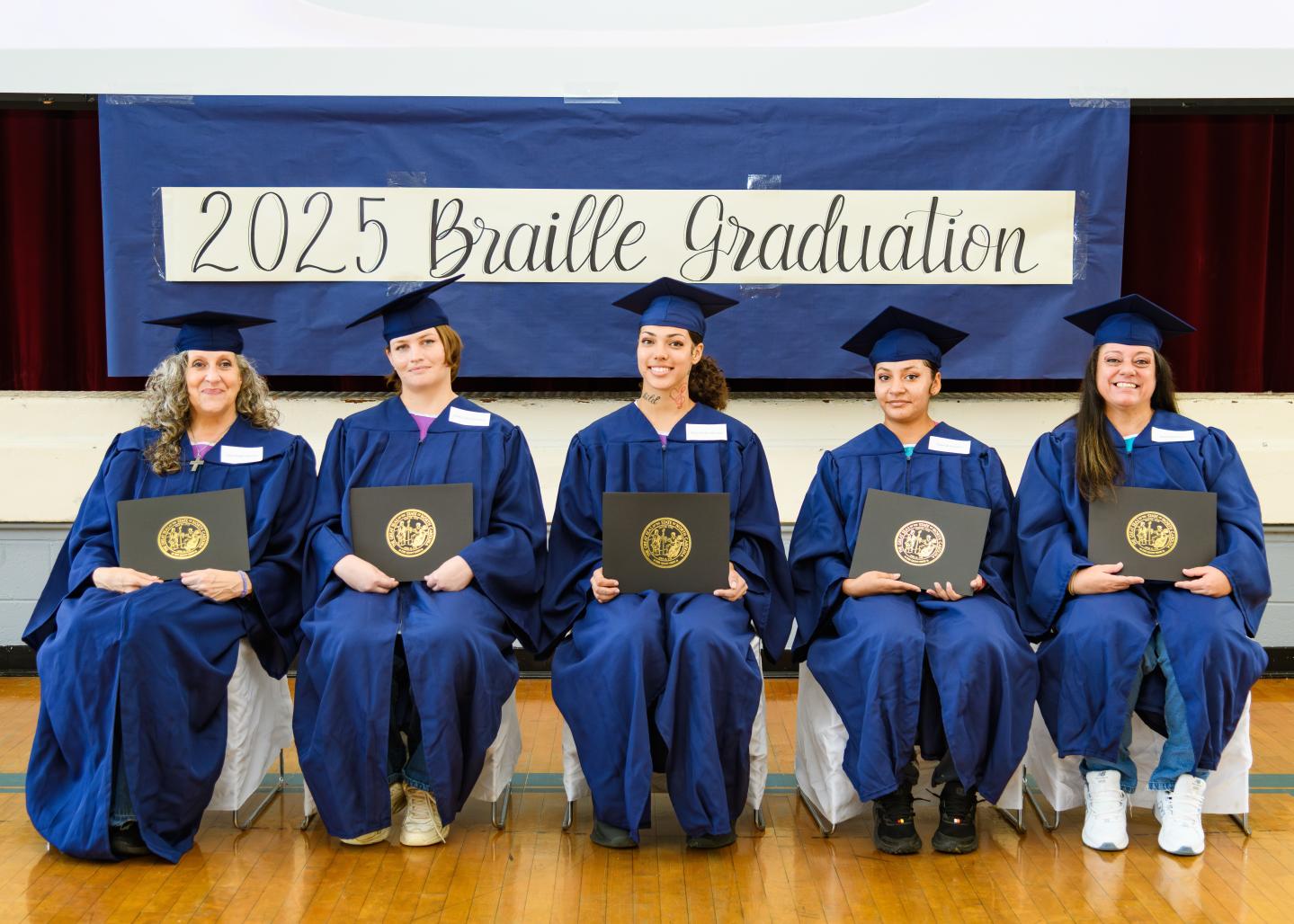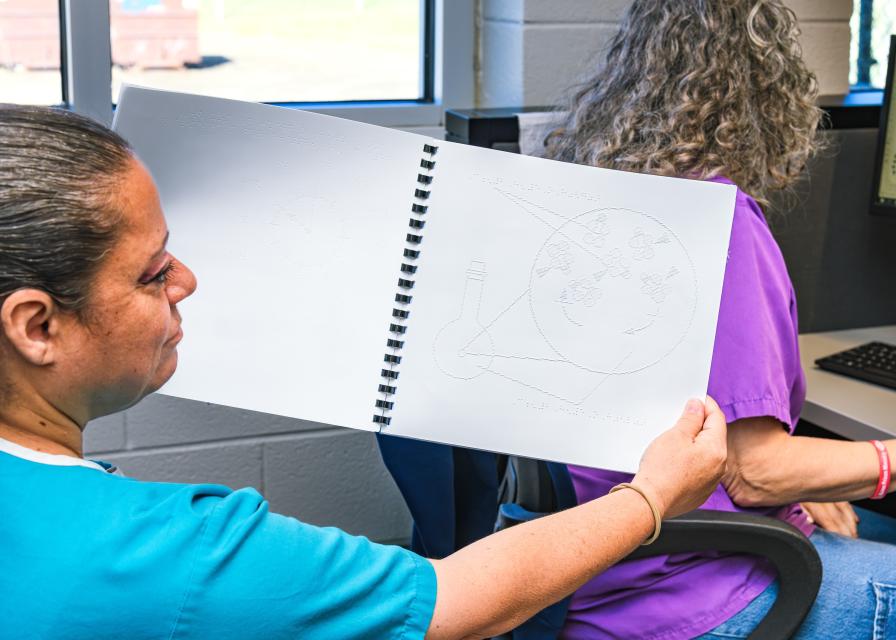Author: Brad Deen

RALEIGH — Five women in custody have earned certification in Braille transcription, providing a service for the visually impaired population and a boost to their own reentry prospects.
“It’s wonderful when things come together,” said Secretary of Adult Correction Leslie Cooley Dismukes at a recent graduation ceremony for the newly certified transcriptionists. “There are 1 million adults in the United States who are visually impaired. You are making a difference in their lives, and you are seizing an opportunity to make a difference in your own lives.”
The Braille Plant at N.C. Correctional Institution for Women launched in 2024, augmenting an established operation for men at Scotland Correctional Institution. Besides providing additional rehabilitation opportunities for women in custody, NCCIW’s Braille shop supplies an increasing demand for products.
“Business expanded to the point that we needed more transcribers,” said Cindy Stubbs, coordinator of the Braille program for Correction Enterprises.
The Raleigh location is also good for customer service. The state Department of Public Instruction is the program’s chief customer for Braille products — from textbooks to standardized tests. “If they need something fast, they’re able to come here and pick it up as soon as it’s finished,” Stubbs said.
NCCIW’s Braille operation can employ 16 women. Eight are currently transcribing or training. The five who earned certification did so through a rigorous yearlong Library of Congress curriculum.
“It’s a gauntlet of technical learning to go through,” said Martin Kish, Correction Enterprises’ chief business and administrative officer.
MORE THAN DOTS
Braille transcription is far more than converting print into raised dots — which itself is more complicated than it appears.
There’s no separate upper or lower case, for example. A mark prior to a letter indicates it’s a capital. The same is true for numerals. A mark prior to the Braille “a” indicates it is a “1,” and “b” is a “2,” up to “j” for “0.”
Before she applied for the program, “I didn’t know what Braille was, other than ‘dots for blind people to read,’” said Yasmin Delos Santos, one of NCCIW’s recently certified transcriptionists. “It’s really given me a whole new understanding.”
She and her colleagues read Braille fluently so that they can proofread their own and others’ work. But their reading is by sight, not touch.
“I’ve tried it,” Delos Santos said. “I close my eyes and try to feel out the pattern of it, but it’s so confusing. It’s something little kids are better at learning.”

Transcriptionists also learn to convert visual information, such as bar charts or a zigzagging graph line, into a touchable format. Using standard graphic design software, they outline the shapes with tightly spaced dots.
“You want to make it so that without seeing, they get the same information as sighted people,” said Hailee Melanson, also newly certified. “It can be challenging,”
Even technical illustrations, such as a molecule’s structure from a chemistry textbook, must be crystal clear to the fingertip reader. Musical notes on a staff can also be formatted into Braille, as can crosswords, Sudoku and word searches.
TRACING CAREER PATHS
Continuing to work with Braille could make their post-release transition smoother.
“It’s a professional investment and a very personal investment,” said Jayma Hawkins, director of the National Prison Braille Network.
Good jobs are available, often working from home, Hawkins said. And because many who work in the field either got their start in a correctional program or work closely with people who did, there’s less of a stigma to having a criminal record.
“They don’t want to know what you did,” Hawkins said. “They want to know what you can do.”
Shannon Priolo said she wasn’t thinking about a post-release career when she applied to NCCIW’s Braille program.
“At first it was just something to do in here,” Priolo said. “It’s opened a whole new door for me, in terms of moving forward with my life long-term.”
Stubbs, the Braille program’s coordinator, prefers to hire applicants with at least eight years remaining on their sentence. That’s partly because of the commitment required, and because higher levels of Library of Congress certification require 5-10 years to complete.
The programs at NCCIW and Scotland also require clean disciplinary and drug screening records, as well as a demonstrated love of learning.
Selectivity is partly why NCCIW’s Braille shop is only half-capacity — eight of 16 slots filled. “We also intended for the first group of women to train the next,” Stubbs said.
Scotland’s 40-man Braille shop has contributed to the women’s training this past year, producing cheat sheets, examples with detailed instructions, even entire guidebooks. The men have also provided encouragement.
At NCCIW, the team has created their own support structure.
“We’ve had to rely on each other to figure things out,” said Joanna Madonna. “We help each other. It’s a cooperative kind of environment here.”
The results add up to more than Braille items produced or certifications earned.
“People come into this program, and they see what they can do,” said Andrea Maxwell. “They might have been beaten down. They have little faith in themselves. It’s wonderful to see them smile and be proud of themselves.”
